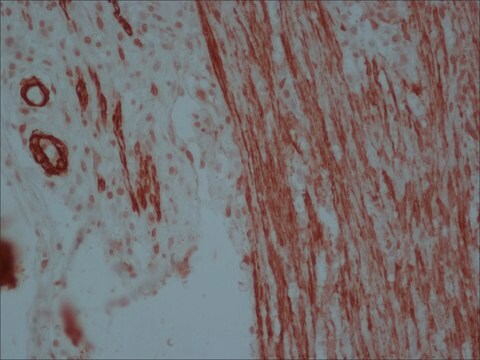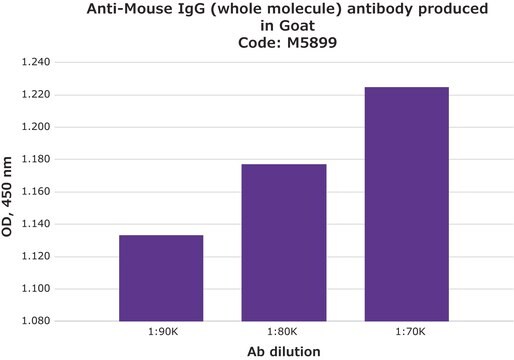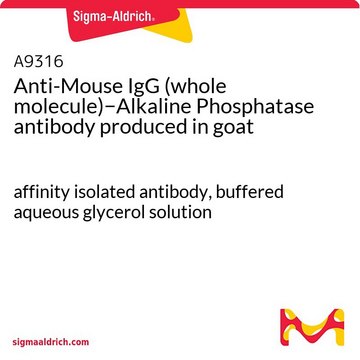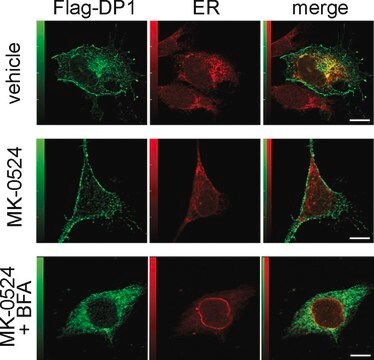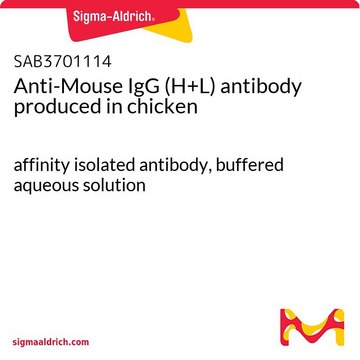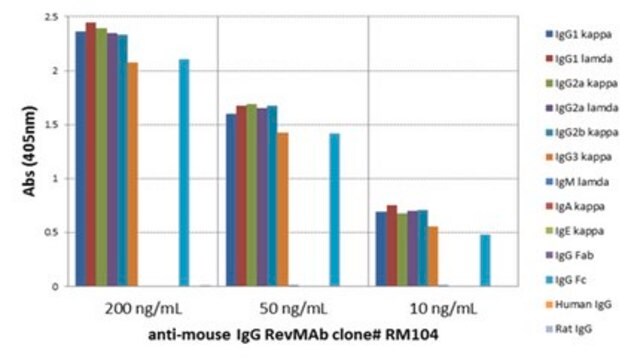M8642
Anti-Mouse IgG (whole molecule) antibody produced in goat
affinity isolated antibody, lyophilized powder
Sinónimos:
Anti-mouse antibody
About This Item
Productos recomendados
origen biológico
goat
Nivel de calidad
200
300
conjugado
unconjugated
forma del anticuerpo
affinity isolated antibody
tipo de anticuerpo
secondary antibodies
clon
polyclonal
formulario
lyophilized powder
técnicas
Ouchterlony double diffusion: suitable
temp. de almacenamiento
2-8°C
¿Está buscando productos similares? Visita Guía de comparación de productos
Descripción general
Anti-Mouse IgG (whole molecule) antibody recognizes IgG1, G2a, G2b, and G3, mouse IgM and IgA. The identity and purity of affinity isolated antibody is established by immunoelectrophoresis.
Inmunógeno
Aplicación
Enzyme-linked immunosorbent assay (1 paper)
Forma física
Reconstitución
Cláusula de descargo de responsabilidad
¿No encuentra el producto adecuado?
Pruebe nuestro Herramienta de selección de productos.
Código de clase de almacenamiento
11 - Combustible Solids
Clase de riesgo para el agua (WGK)
WGK 3
Punto de inflamabilidad (°F)
Not applicable
Punto de inflamabilidad (°C)
Not applicable
Equipo de protección personal
Eyeshields, Gloves, type N95 (US)
Certificados de análisis (COA)
Busque Certificados de análisis (COA) introduciendo el número de lote del producto. Los números de lote se encuentran en la etiqueta del producto después de las palabras «Lot» o «Batch»
¿Ya tiene este producto?
Encuentre la documentación para los productos que ha comprado recientemente en la Biblioteca de documentos.
Los clientes también vieron
Nuestro equipo de científicos tiene experiencia en todas las áreas de investigación: Ciencias de la vida, Ciencia de los materiales, Síntesis química, Cromatografía, Analítica y muchas otras.
Póngase en contacto con el Servicio técnico



